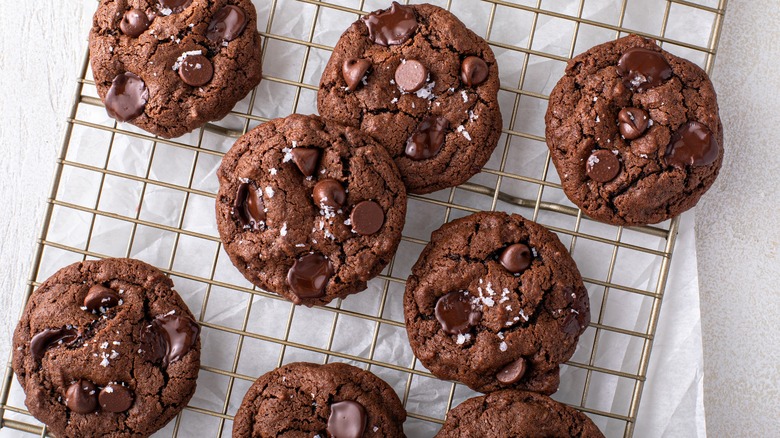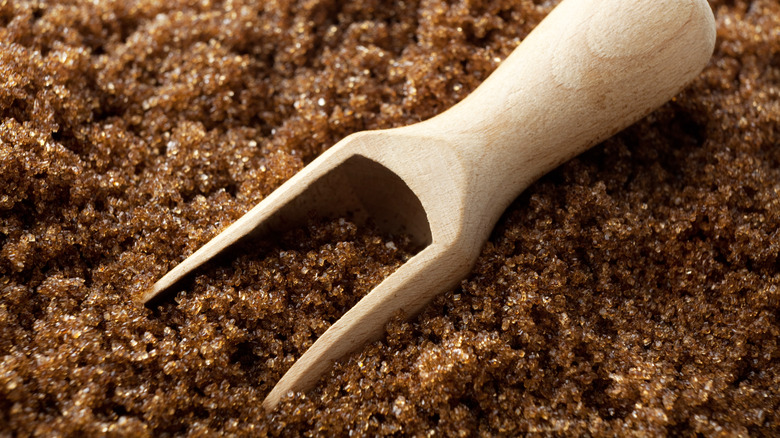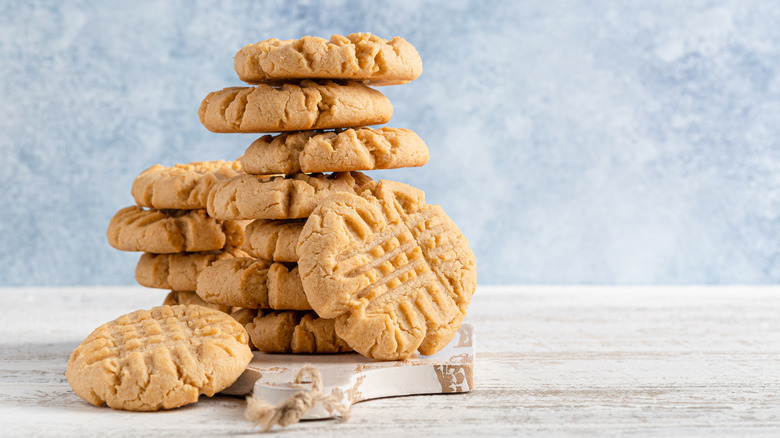For The Chewiest Cookies, Skip The Granulated Sugar
So you've measured the ingredients, creamed the butter and sugar, kneaded your dough, and even let it chill in the refrigerator overnight. No matter how hard you try though, your cookies always end up coming out a little too crisp and brittle for your liking. Now you're scratching your head wondering where you went wrong in trying to make soft, moist, and ultra-chewy chocolate chip cookies, but if it's granulated sugar that you've been using in your recipe, chances are that it's the sugar that's a contributing factor.
The key to chewy cookies is moisture and while sugar's job is to bring sweetness, it can also affect the moisture level of a cookie and change its overall texture. For one, though granulated white sugar too is hygroscopic — which means that it can absorb and hold water, consequently increasing the overall moisture of a baked good — there is another alternative that is even more hygroscopic: brown sugar. Additionally, brown sugar has molasses in it (which granulated sugar doesn't), further adding more water and moisture to bakes. By swapping the granulated sugar with brown sugar, you get cookies that are more moist, tender, and chewy.
How to substitute brown sugar in your cookie recipe
Skipping the granulated sugar in your cookies and adding brown sugar in its place is fairly easy and can be done using a 1:1 ratio. Usually, the swap of sweeteners would mean that you'd also need to tweak other ingredients in your recipe. For example, its increased moisture means that you'd have to cut back on other liquids listed or add more dry ones to make up for the excess. In the case of chewy cookies, however, the extra moisture is only a bonus.
That said, you can always begin by swapping only part of the granulated sugar with brown sugar to get that chewy — but not too-chewy — texture in your cookies, so they still have a crispy bite to them. Begin by experimenting with half and half granulated and brown sugar in your recipe until you find a ratio that's the sweet spot for your liking. If you don't have brown sugar at your disposal, fret not; it's incredibly simple to make some at home. All you have to do is take a cup of granulated sugar and whisk in two tablespoons of molasses — brown sugar is just granulated sugar with molasses after all!
Tips to make cookies more chewy
Swapping granulated sugar is one way to make cookies more chewy, but that utterly soft and tender texture depends on several factors. For one, consider swapping the butter in your dough with vegetable shortening. While the former contains milk solids and water that steam under heat and leave your cookies dry and crumbly, vegetable shortening is 100% fat. This means that shortening will hold moisture even under high heat, making cookies more moist. Similarly, egg whites are another culprit that can make cookies more dry than tender. Instead, swapping these with fat-filled yolks will increase the chewiness of cookies.
Another important ingredient to consider is the flour that you use. While all-purpose flour is the status quo in most cookie recipes, for maximum chewiness, you want flour that has more protein. The more protein, the more gluten your dough will develop and the more liquid it will be able to hold — meaning more chew. While all-purpose four clocks in somewhere around 11.7% of protein, bread flour can have as much as 12.7% of protein, making it an excellent flour swap for chewy cookies.
Flour and sugar aside, it's good to remember that moisture is a chewy cookie's best friend. This means that you should take whatever steps necessary to ensure that your cookies have as much moisture as possible: Bake them at a lower temperature, reduce the baking time, and even store them properly to prevent them from drying under exposure to air.



